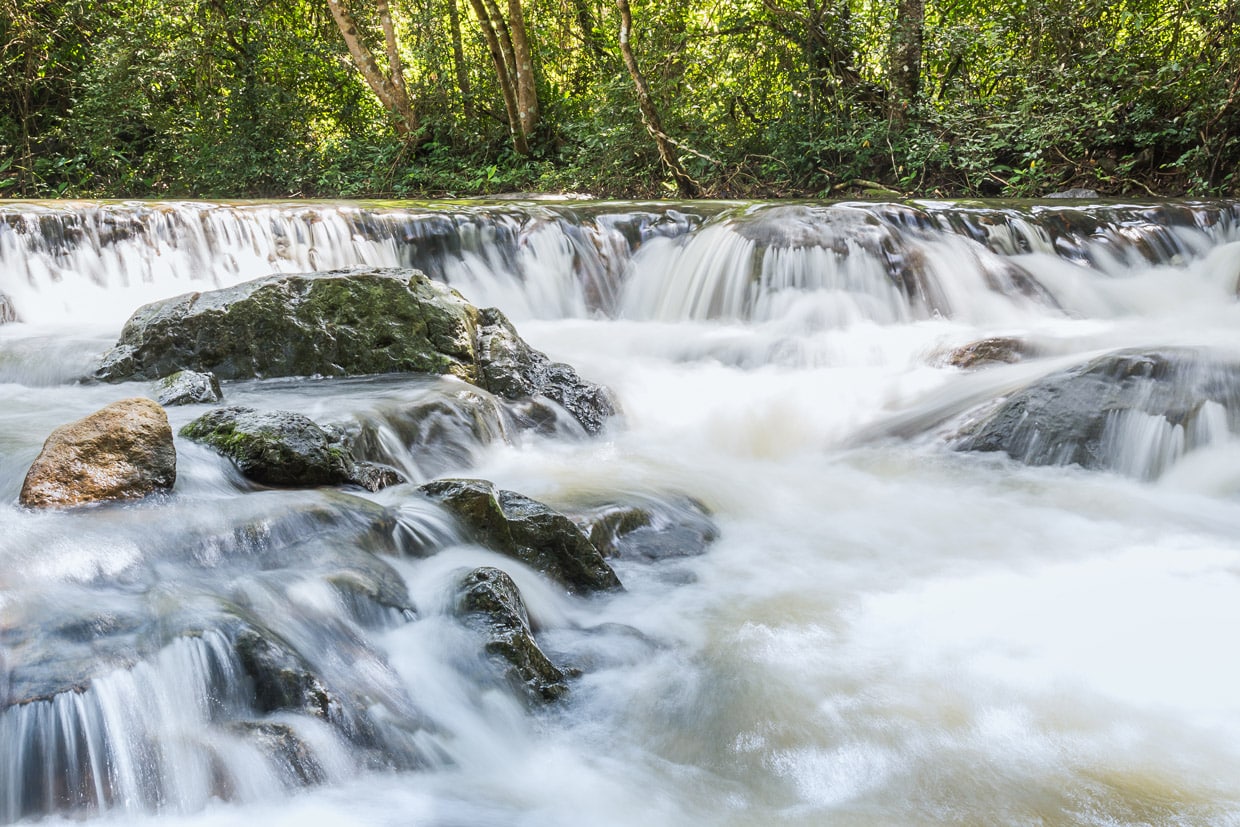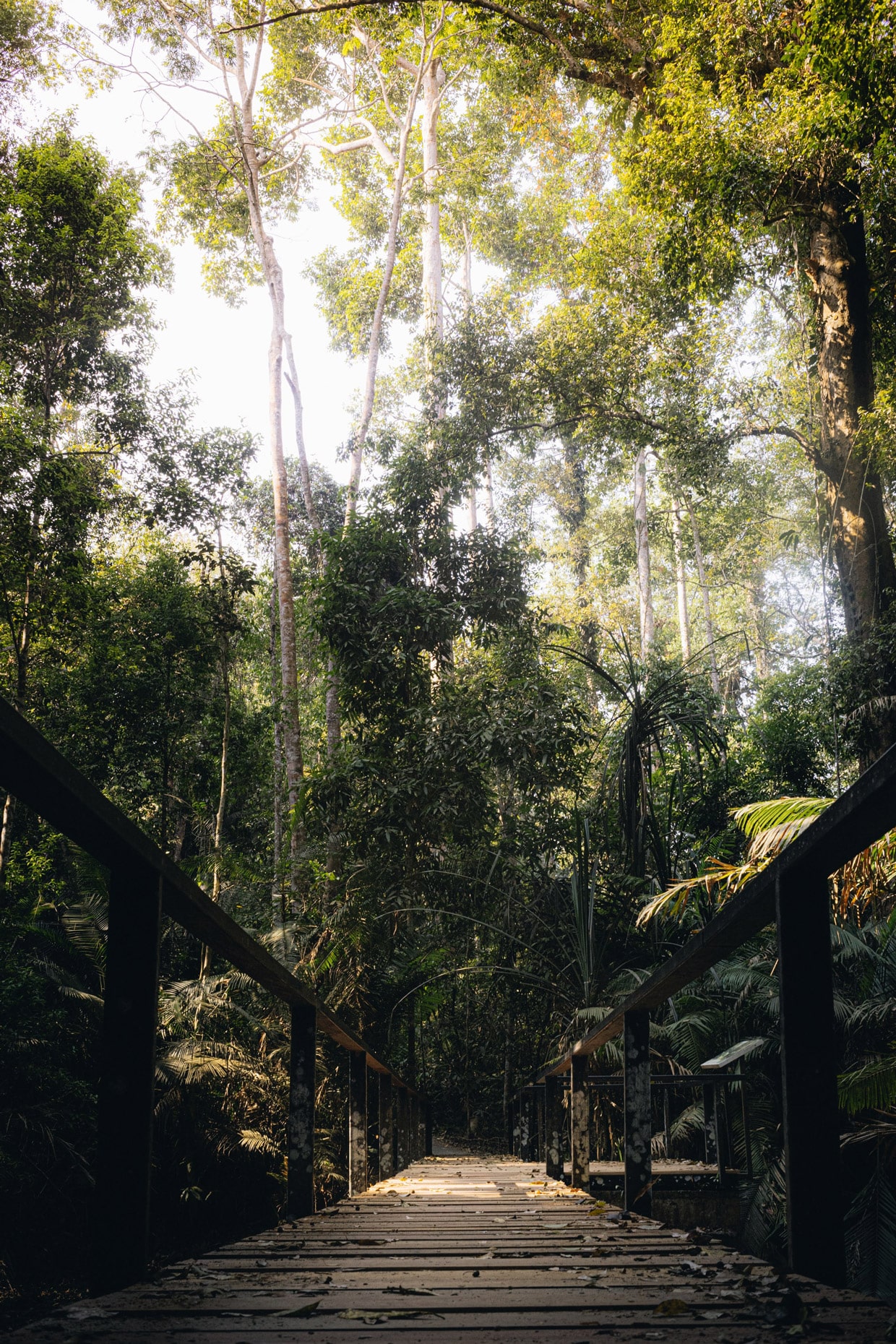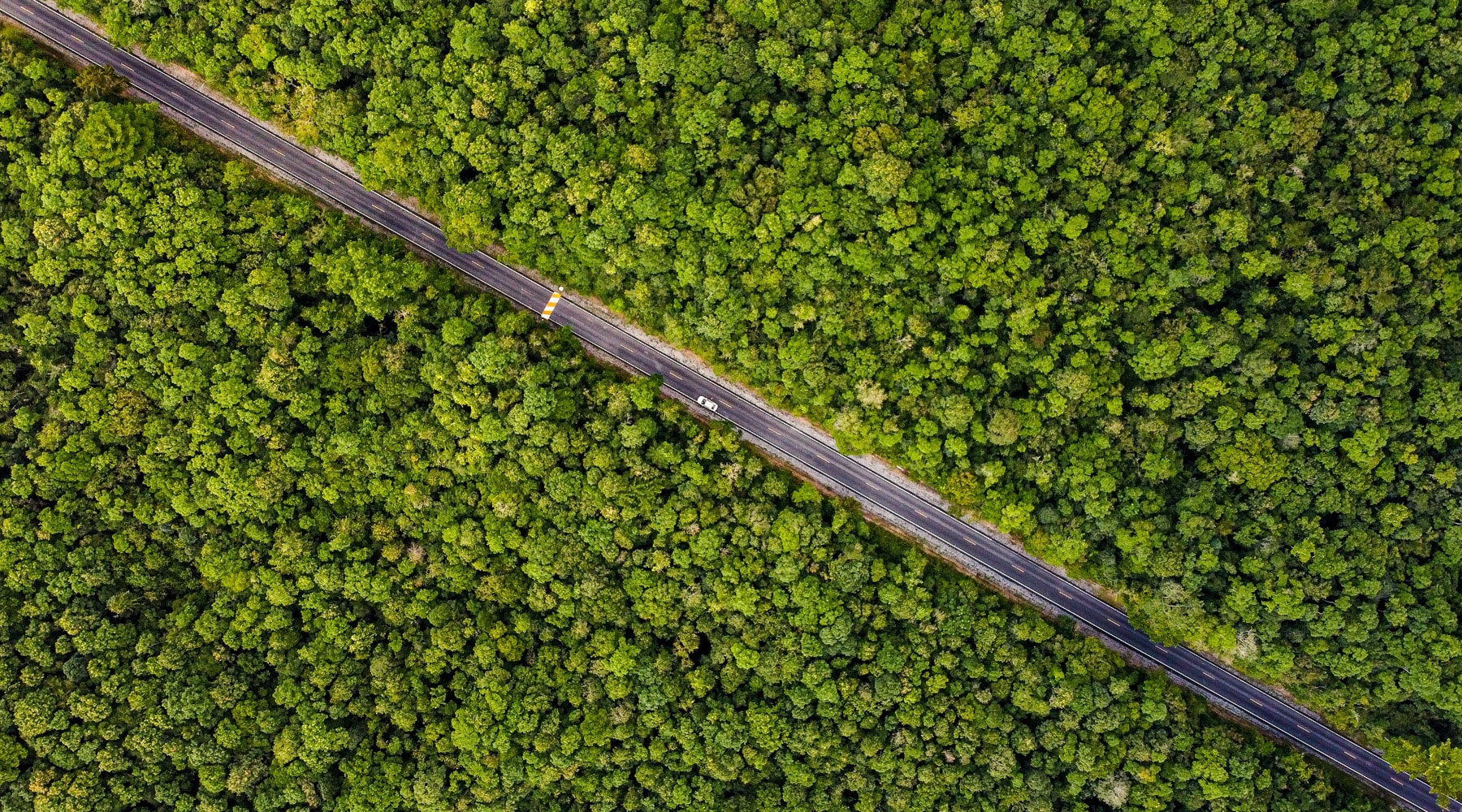There’s so much to explore in Thailand‘s first national park, Khao Yai National Park: mountains, dense forests, exotic wildlife, waterfalls, lakes—the list goes on and on. Spanning into four provinces, the sprawling park boasts 2,100 square kilometers and offers something for everyone.
What to Do in Khao Yai National Park
Haew Suwat and Haew Narok Waterfalls You must visit one of several waterfalls on a trip to Khao Yai. One obvious choice is Haew Narok because it’s the highest waterfall in the park. It also is a promising spot for spotting elephants since they like this area. Hiking a 600-meter trail leads to this three-tiered beauty; you’ll find a restaurant and restrooms at the trailhead, so you can fuel up before the hike.
Fans of the Leonardo DiCaprio movie The Beach will enjoy Haew Suwat, as he has played in a movie there. It is also worth visiting Nam Tok Pa Kluai, sometimes known as the orchid waterfall, due to its surrounding rocks covered with orchids. You can also hike to numerous smaller and lesser-known waterfalls on the trail, such as Nam Tok Haeo Prathun.
Khao Khiau and Khao Laem Different Points of View
You can hike to one of several peaks for a great view of the surrounding area. At 1,328 meters, Khao Laem and Khao Khiau (Green Mountain, 1,350 meters) are the two highest mountains in the southern section of the park. Both of these mountains can be climbed in a single day. There are a lot of routes in the park that are marked according to their difficulty, so when you arrive, ask park guides which ones are open and safe, some of them are only accessible with a guide.
Going on a Trek
In the park, there are around 50 kilometers of hiking trails, which cross grasslands, jungles, and waterfalls. It is not an uncommon thing for the park to promote the usage of six specific trails because they are safe, offer stunning views along the way, and are appropriate for all fitness levels. Those who are more adventurous may seek trails that are rougher and more advanced.
For bird-watchers, the 1.2-kilometer, one-hour loop is ideal, while hikers can opt for the 3.3-kilometer, two-hour hike to the Nong Pak Chi observation post—a great spot to see elephants in the early morning or late afternoon. Finally, it is possible to hike across to a waterfall in a 5-hour trek following an eight-kilometer trail, but you need to hire a guide.
Animal Observation
Khao Yai’s wildlife is its key attraction, and for a good reason—its impressive fauna includes more than 70 mammal species. In addition, the park contains a huge range of endangered species such as pig-tailed macaques, Asian black bears, clouded leopards, water monitors, king cobras, and pythons, to name a few.
Khao Yai National Park could be one of the best sites you can go to in Thailand for seeing wild elephants, with approximately 300 living there. A park ranger can take tourists to some of their favorite spots in the park, including the jungle undergrowth and a massive waterhole.
On Nong Pak Chi tower, as well as grassland areas, wild animals can also be observed at dawn and dusk, where gaurs and deer graze. The best way to observe birds in the park is to go on jungle hikes — there are four types of hornbills, banded kingfishers, pelicans, and cuckoos.

Wildlife
Mammals
There is a lack of other parks worldwide with a more impressive collection of wildlife, but Khao Yai is a great park to go mammal watching since Khao Yai is one of the easiest to get to national parks in Thailand. It is a little more difficult to spot elephants in Khao Yai National Park as compared to Kui Buri National Park.
Another mammal commonly seen is the northern pig-tailed macaque, which is also easily identified as a baby. Other mammals that are sometimes seen include gibbons, porcupines, and civets. Sun bears, Asian black bears, gaurs, otters, dholes, and jackals are other elusive species that can sometimes be seen from time to time.
Tigers have not been observed in Thap Lan National Park for some time. However, camera traps have revealed the presence of tigers in the neighboring Pang Sida and Thap Lan National Parks. Therefore, there is hope that the tigers will be returning to Khao Yai from Thap Lan once this wildlife passage is constructed.
Birds
Nearly 445 bird species were recorded at Khao Yai, some of which may be accidental records.
The park is the home of Thailand’s largest population of hornbills. Almost daily visitors can be seen flying over the visitor center area at the Great Hornbill and Oriental-pied hornbill.
Only Khao Yai National Park has been recorded as having a Rufous-tailed robin in Thailand. Some of the other uncommon animals are such as Austen’s brown hornbill, White-browed fantail, Lemon-rumped warbler, Straw-headed bulbul, Streak-throated woodpecker, Blyth’s pipit, Greater adjutant, Trilling shrike-babbler, and Northern goshawk.
Jungle Fowls are highly common as wild chickens, found almost daily along the roads. The birds include common ground dwellers such as silver pheasants, green-legged partridges, and Siamese firebacks. Birdwatching in Khao Yai is best during the dry months and when the big bird migration occurs during the months of March to April.
Reptiles
More than 85 species of reptiles have been counted in Khao Yai so far.
A park host to three pit viper species; Vogel’s pit viper, large-eyed pit viper, and White-lipped pit viper (Trimeresurus Albolabris). Despite being the most commonly found pit viper in the country, white-lipped pit vipers are much rarer in the park. It is because the park is mostly montane, and white-lipped pit vipers prefer lower elevations.
The park is home to two endangered species as well. The Gibson’s wolf snake (Lycodon Gibsonae) and the Nganson bronze back (Dendrelaphis Ngansonensis) both live in the park. Additional interesting species include reticulated pythons, blood pythons, Burmese pythons, Indo-Chinese rats, snakes, whip snakes, and many others.
The lone Siamese crocodile that used to live in the park along one of the trails is nowhere to be seen recently, apparently dead.

Location
Khao Yai National Park is situated in a mountainous region bordered by Pak Chong, a small town located in the park’s gateway. Pak Chong and Khao Yai are situated about 200km away from Bangkok, making them easily accessible from the capital.
If your travel plans take you to Saraburi via Bangkok, take Highway 1 and follow Highway 2 from Pak Chong. Alternatively, you can arrive in the city by train on the Bangkok-Nakhon Ratchasima line or by bus from the Bangkok Northern Bus Terminal (around four hours). If you arrive here, you will be guided to the nearest bus stop for a 40-minute trip (about 40 minutes away from Pak Chong) or sent by a taxi driver to the park’s entrance.
Getting There & Getting Around
In order to avoid disappointment, it is important for visitors to get to Khao Yai National Park to read the details provided in this section on how to get to and around the park. Opening the map of Khao Yai will help you understand the distances and locations of the hotels/attractions. Information on many places is displayed directly on the map. The interactive map can be zoomed in/out.
If your budget is limited, it is important to find the right accommodation for your needs in the right area. Please continue reading below for more information. On the weekend the park can be extremely busy while on longer holidays. It is a very popular attraction, both for foreign and local tourists.
The closest town to the park is Pak Chong in Nakhon Ratchasima Province, located at the northern entrance of the park. There is also an additional entrance to the west in Nakhon Nayok province.

Find a Way to Reach Pak Chong or Khao Yai
Bangkok is the main point of entry for most visitors to Khao Yai. You need a car to reach that area north of Khao Yai in good traffic in around 2.5 hours.
The public transport from Bangkok can take you to certain places north of Khao Yai, but it could take you up to 6 hours. There’s a reason; Buses leave Mo Chit Bus Station, which can be difficult to get to during rush hours, especially in the afternoons and evenings. There is a bit of time spent purchasing tickets once you reach the bus station and waiting until the bus departs.
Once passengers are in Pak Chong, a songthaew departs to Khao Yai once each hour, but only when enough passengers are on board—which means another long wait is in store. The park can only be reached by public transportation if one is north of Khao Yai. Furthermore, some hotels are not located along the road of Songthaews reach, many of which can only be reached by car.
Make Your Way Into the Park
From the checkpoint, entry to the park is not permitted on foot. The visitor center is approximately 14 km in length within the park, and there are many other attractions. The distance between a couple of popular attractions in the visitor center is simply too large. It’s good to know this. Traffic is usually enough to allow for hitchhiking.
At the end of November 2018, there were only ten functioning bicycles to rent from the visitor center. We will limit the number of bikes for rent in the park if there are too many visitors. On weekends and out of season, the parks get overcrowded, so be aware and come prepared.
If visitors intend to explore the park without a guide, they should know that they will not be able to walk the longer trails on their own. You can easily get lost in this jungle with all of its wild animals. There have been countless cases of people going missing, only to be found the next day or several days after. One Thai national was tragically killed in an incident that occurred in 2018. However, according to search engines and the internet, the number of lost tourists in Khao Yai has dropped dramatically in recent years.
Only a couple of trails are allowed to be walked freely by tourists; one is approximately 800 meters in circumference behind the visitor center, the other is not far from the visitor center.
The park’s best waterfalls, two most popular viewpoints, and the visitor center are all accessible by car or bike, and you don’t need a guide to get there since they’re all close to where they park. When planning it you should consider, once you enter the park, four attractions are accessible by car, plus the time spent at each. It can take around 3 hours to drive from one point to another. In other words, it is not a short distance.

Wildlife Tours
We suggest that you book a wildlife tour if you would like to see animals and walk trails. If you do a guided tour, you will have the opportunity to walk further trails in the jungle and spot more elusive creatures. To avoid disappointments if your private tour is delayed by bad weather, it is advisable to book well in advance.
There is a good notion to keep in mind when booking a hotel in Khao Yai that it is unlikely that a tour operator may be able to provide pickup from hotels too far from its main service area. Therefore, before booking any tour, make sure the tour operator includes pickup at a specific hotel.
Hotels
Outside the park, boundaries are plenty of hotels and guesthouses. The accommodations listed on our Khao Yai Travel pages under the Get there & Stay section are some of the most popular ones. Different tour operators can pick up clients in listed hotels in the area. However, several hotels in the area do not like the tour operators to pick up their guests from their hotels and should be avoided for flexibility. Any hotel that you wish to stay in is always best to discuss with a tour operator.
Camping
Besides Lam Ta Khong Campsite, there are two other campsites in the park. Pha Kluai Mai Campsite is located in the south. You can rent tents and sleeping gear at each campsite, but reservations cannot be made in advance. We hope that you would have a magical experience on this journey that you won’t ever forget.































